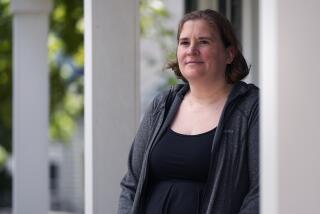School’s Start Helps the Food Budget
- Share via
When classes start this week, many of the kids who play at the Garden Grove Boys & Girls Club will heartily welcome the hot lunches they get at school. They don’t always taste great, the kids say, but it feels good to have a full stomach.
Like others who work with poor families in Southern California, Evelyn Matua, branch director at the club’s Clinton branch in Garden Grove, says low-income parents and their children realize how important those school meals are during the summer months when they aren’t available.
While poor families have the same food shortfall every year, this summer has been particularly difficult because Orange County’s rents are higher than ever.
According to the Orange County Department of Education, 38% of students receive free or subsidized lunches.
Maria Velasco, a 40-year-old mother of two, said her son complains all school year about the food. “ ‘I don’t like it,’ he says. But now, he really misses it.”
Velasco, who earns $6.60 an hour, finds that her summer food bills are as much as 50% higher than during the school year. She sends her children to the Clinton Boys & Girls Club program that includes a Kid Cafe, organized by Second Harvest Food Bank to feed children in the summer and after school.
But she and other parents say that even with that help, summers are still tough. Velasco jokes that she’ll “trick the kids’ stomachs, by making dishes with a little meat and vegetables and lots of rice.”
Other families said they water down punches and lemon-based drinks and serve lots of macaroni and cheese.
“We’re probably spending $20 more a week on food. It really makes things tight,” said Santa Ana resident Soccoro Fuerte, a 34-year-old mother of three. The family’s rent recently rose $100 to $800 and the family’s monthly income is $1,500, with both parents working.
Gino Perez, 36, a Garden Grove father of five, said the family’s weekly supermarket bill rose from $50 to $100 this summer.
“Summer is when we spend lots and lots of money,” he said.
Linda Boehm, promotions and marketing manager for the Sacramento-based California Foundation for Agriculture in the Classroom and a former San Juan Capistrano teacher, said low-income parents with little time for planning often turn to fast foods, many of which are high in sugar, salt and fat. Fruits and vegetables are often missing from the diet. The children do not get certain vitamins and minerals they need, she said.
The Orange County Rescue Mission received calls earlier this summer from motel managers who noted that homeless children were going hungry because they did not have school lunches, said Jim Palmer, president at the Orange County Rescue Mission and chairman of Orange County’s Housing and Community Development Commission. The mission then worked to increase its food bank to feed the families.
Some schools that offer summer classes open their lunchrooms to any children who need a meal in the summer months. But many poor children must wait until September.
Angelo Doti, Orange County’s welfare reform director, said that when school is in session, it is not uncommon for children to save half their school lunch for dinner.
In the summer, children lose “the safe zone in their lives,” he said. “The schools are a real source of nutrition for these children.”
More to Read
Sign up for Essential California
The most important California stories and recommendations in your inbox every morning.
You may occasionally receive promotional content from the Los Angeles Times.










